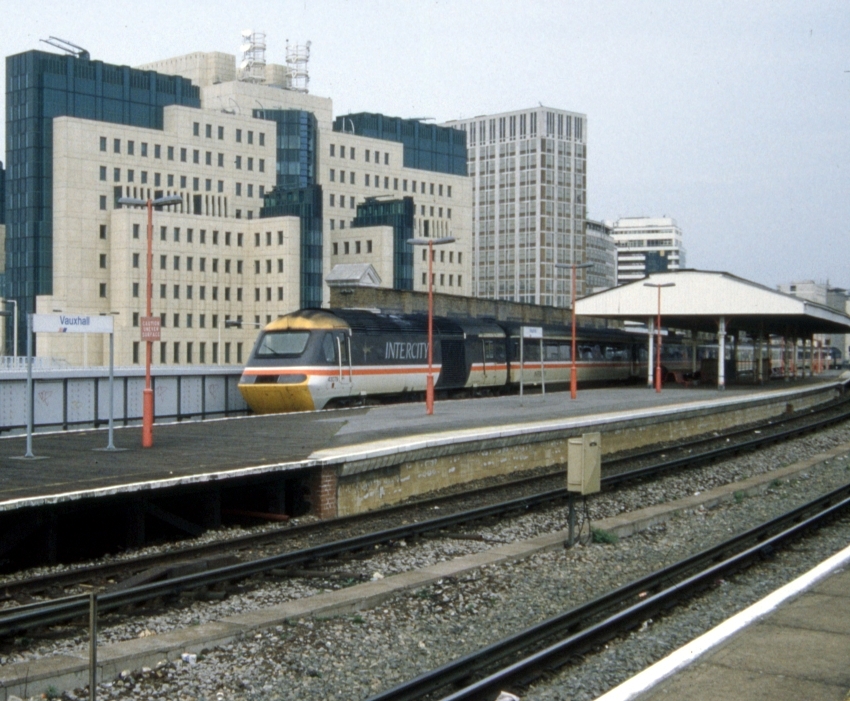Eurostar InterCity 125
Eurostar services commenced from Waterloo International to Paris and Brussels on 14th November 1994. At the time, ‘’Regional’’ Eurostars were very much on the agenda, providing passengers in northern provincial cities with direct train services to Mainland Europe. Glasgow, Manchester, and Birmingham were to be beneficiaries of these trains, with proposed schedules as follows:
- Manchester to Paris, calling at: Stockport, Crewe, Stafford, Rugby, and Milton Keynes
- Manchester to Brussels, calling at: Stockport, Crewe, Stafford, Wolverhampton, Birmingham New Street, Birmingham International, Coventry, Rugby, and Milton Keynes
- Birmingham (New Street) to Paris, calling at: Birmingham International, Coventry, Rugby, and Milton Keynes
- Glasgow to Paris, calling at: Edinburgh, Newcastle, Darlington, York, Doncaster, Newark, and Peterborough
- Glasgow to Brussels, calling at: Edinburgh, Newcastle, Darlington, York, Doncaster, Newark, and Peterborough
These services, in addition to the ‘’Nightstar’’ sleepers, were earmarked for a May 1997 start, using short-formed Class 373 Trans Manche Super Trains. Those Class 373 trains which departed Waterloo International were twenty vehicles long (including power cars), whilst those sets intended for provincial cities were to consist of sixteen vehicles. Stepping into the breach until the "Regional" trains commenced, European Passenger Services decided to sublease HST 125 sets from InterCity CrossCountry (by then a shadow franchise in the run-up to privatisation), to operate connecting services from Manchester Piccadilly and Edinburgh to London Waterloo. There was one train a day in either direction between Edinburgh and Waterloo and the latter and Manchester, operating Mondays to Saturdays. In the capital, services from Edinburgh were routed via the North London Incline, Camden Road, Gospel Oak, Willesden High Level, the West London Line, and Sheepcote Lane Curve. Those from Manchester were routed via Willesden Junction, the West London Line, and Sheepcote Lane Curve.
The ‘’Eurostar Link’’, as the HST services became known colloquially, comprised similar intermediate stops to those of the proposed Regional Eurostar trains. Unfortunately, their usefulness as general cross country services was prevented by the condition that only Eurostar ticket holders could travel on them – a consequence of this was the fact that these trains were always lightly loaded. Indeed, even those passengers who held Eurostar tickets generally preferred to use the standard – and more frequent – InterCity services to London, and then hop across to Waterloo on the Tube. Sadly, these factors made the services a complete failure, and in January 1997 both Manchester and Edinburgh HSTs to Waterloo ceased. In addition to low passenger numbers, Eurostar faced a sublease expiration in the coming March, and the offer of cheap tickets to their customers on normal InterCity services into Euston compounded the case for withdrawal.
But what of the promised Regional Eurostar and Nightstar services? As a result of a draconian cost-cutting exercise by London & Continental Railways (the private holding company of European Passenger Services since February 1996), both schemes were formally cancelled on 9th July 1999. At the time, it was made known that even Eurostar services operating out of London were carrying far fewer passengers than originally forecast.
Cardiff to Waterloo HST 125
In addition to the HST 125 services to Waterloo from northern cities, a connection was made between the Eurostar terminus and South Wales. In the January 1995 edition of Modern Railways, it was reported that the first of these trains ran on 24th October 1994, and that since 14th of the following month, the service connected with the first arrival of the day from Paris. The service was sponsored by InterCity Great Western and ran via Kensington Olympia to Bristol Parkway and Cardiff.
Route Diversion
As a result of engineering works, a temporary change of route was made for the HSTs serving Waterloo. In the December 1995 edition of Modern Railways, a seven month closure of the Willesden Junction to Camden Road via Hampstead Heath line was reported, which was effective from 29th October 1994. The closure was to allow for the installation of 25kV overhead wires and structural clearance in preparation for "Regional Eurostar" trains. A bus service replaced local trains on the route, and the InterCity 125 service between Waterloo and Edinburgh was operated via Primrose Hill.
October 1995

The Manchester Piccadilly to Waterloo HST 125 service is seen cruising through Kensington Olympia, wearing full InterCity ''Swallow'' livery. Power car No. 43092 is leading. © David Glasspool Collection
Return to the Kent Rail Homepage or alternatively, check for Updates.
Website & Copyright information - Links - Contact the Webmaster


